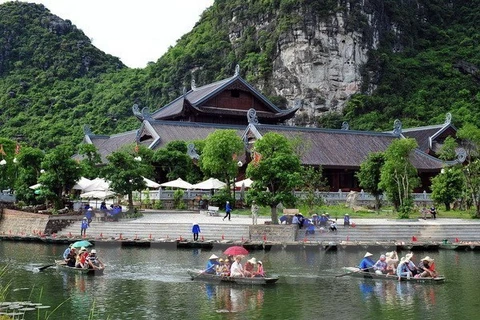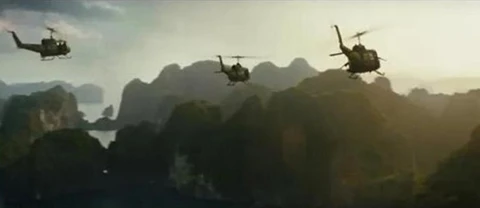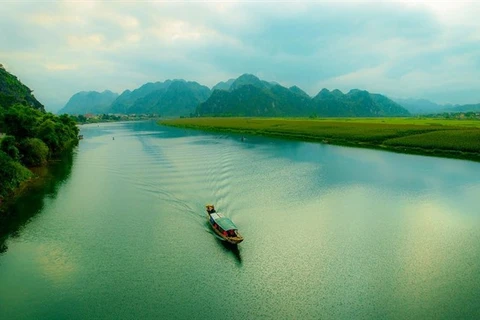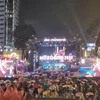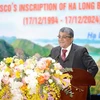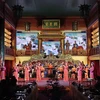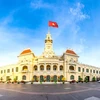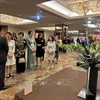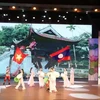Hanoi (VNA) - Vietnam provided the “perfect aesthetic” for the film “Kong: Skull Island”, director Vogt-Roberts was quoted by Channel NewsAsia on its website www.channelnewsasia.com.
For the director, filming in Vietnam stood out.
“I scoured the world. I very specifically didn’t want (the film) to look like Jurassic Park ... I wanted it to look fresh,” he explained. “I think audiences go to cinemas to see new things. So I went to a lot of places in Asia. People have shot in Thailand before and it seemed like an easy fit but I was like, ‘No!’ so we kept going around. And then I landed in Vietnam, looked at these landscapes and just fell in love.”
“The look of Vietnam is gorgeous and otherworldly at the same time,” he said. “There’s such a raw, powerful and unspoiled beauty that general audiences hadn't experienced on screen before. There’s a ruggedness and a beauty to a place like Vietnam.”
Even though it has been chosen as a Hollywood film location before, this was the first time Vietnam has hosted a film production of this size, scale and magnitude. The entire cast and 120 crew members of “Kong: Skull Island” was all on site in February last year, shooting in Quang Binh's colossal caves and the tranquil town of Phong Nha, as well as the world-renowned Ha Long Bay and the northern province of Ninh Binh.
Known for their untouched spectacular scenery and wondrous natural structures, these are some of the most remote and beautiful parts of Vietnam that have not been seen much in a Hollywood film.
“That’s the reason why we shot there, because you’re trying to find something that is completely untouched and looks unlike anything you’ve seen before. And Vietnam is the answer to that,” said actress Brie Larson.
“You can see it in the film. People will have to go visit it. I cannot say enough nice things about Vietnam. It was my first trip there and it will certainly not be my last. Hanoi was absolutely incredible … and Ninh Binh was also beautiful. I tell everyone who wants to go there that (Hanoi) is such a great place to start because there’s so much to do and so much to see.”
Larson, who had to fly directly from Vietnam to the Academy Awards to receive her Best Actress Oscar and then back to resume filming of Kong the morning after, told Channel NewsAsia that the experience was all about “the little things”.
“They built our trailers from the ground up! They took what I think were old school buses, gutted them completely and put in plumbing and couches. It was amazing!” she recalled. “The craftsmanship on those things was amazing. It was just little things. I think they even built roads for our trucks to get to these locations because we were so remote.”
Veteran actor John Goodman told Channel NewsAsia that it was a “pleasure” to run around the streets of Hanoi trying to get lost and finding his way back.
“They said we were the first western film to film there, and they were very accommodating to us,” he said. “And they wanted us to feel welcomed and they most certainly did that.”
“In and out of the countryside, you see some rice farmers, some buffalos, things that I never thought I’d see. Water, caves, it was just beautiful.”
All that said, filming in Vietnam was not without its own challenges.
Because of its remoteness, actor Samuel L Jackson shared that travelling from where they were living to the actual location took up to two hours on some days.
“Some days, we had to get in canoes with little ladies who rode us through the mountains and caves,” he said with a smile. “But that was kind of fun!”
For Tom Hiddleston, it was filming one particularly tough swamp sequence.
“There’s a swamp that we ran through every day for 10 days which was incredibly cold! And for continuity, we had to get the same amount of 'wet' for every one of the 10 days,” he recalled.
But overall, the Brit actor found working in Vietnam nothing short of “amazing” and a “privilege”. And that is because the people were so welcoming and warm, he said.
“The topography of where we were … I’ve never seen landscapes like that before,” he continued. “It’s our job as actors to imagine we’re living in this desert island and undiscovered wilderness untouched by man. And the fact that we’re in these swamps, out of which arises these towers of rock, makes at least that part of the imagination easier.
Vogt-Roberts is hopeful that the film will encourage more people to visit Vietnam, although he said he is mindful of both the advantages and pitfalls.
“But it’s such a beautiful part of the world. I find that people on that side of the world have that general graciousness that we lack here (in the US). And so I sincerely believe that our film will have a positive impact on tourism, filming, and a general understanding of how stunning and beautiful the country is.”
Which is why, for all the challenges that filming in Vietnam presented, Vogt-Roberts wanted both his actors and the audience to “feel the tactile nature of the environment”.
He hopes that people will walk out of Kong: Skull Island wanting to discover Vietnam for themselves. “I hope that people will look at this movie the same way they looked at Lord Of The Rings, Middle Earth and New Zealand and ask ‘Where did they shoot that?’” he said.
“I hope they go and explore Vietnam, fall in love with the landscapes, the people, the culture and the food. I hope they explore the rest of Asia as well, because I don’t think a lot of people think to go to these places as much. I want them to fall in love the way that I did.”-VNA
VNA



